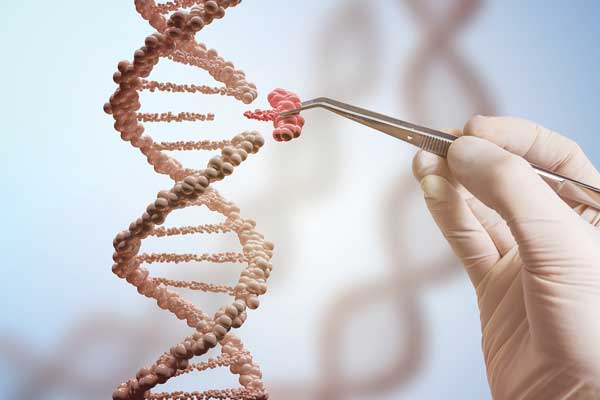Enhancing Food Sustainability Through CRISPR
IFTNEXT
Faced with feeding nearly 10 billion people by 2050, how can we manage food crops and food animals that are more sustainable, more nutritious, adaptable to climate change, safer, less wasteful, and perhaps even allergen or gluten free? Tackling all of these challenges is a huge endeavor but one tool—CRISPR gene editing—may hold the key to sustainable food production.
 CRISPR, which stands for Clustered Regularly Interspaced Short Palindromic Repeats, enables the precise editing of a gene or DNA in a species without transferring gene material from another species. With CRISPR, unwanted traits such as browning in mushrooms can be eliminated or suppressed. Since the technology does not introduce a foreign gene into a food crop or animal (i.e., transgenic), some regulatory authorities in the United States, such as the U.S. Dept. of Agriculture, have not required regulation of the new gene-edited versions of food crops. The lack of regulatory hurdles may speed commercialization.
CRISPR, which stands for Clustered Regularly Interspaced Short Palindromic Repeats, enables the precise editing of a gene or DNA in a species without transferring gene material from another species. With CRISPR, unwanted traits such as browning in mushrooms can be eliminated or suppressed. Since the technology does not introduce a foreign gene into a food crop or animal (i.e., transgenic), some regulatory authorities in the United States, such as the U.S. Dept. of Agriculture, have not required regulation of the new gene-edited versions of food crops. The lack of regulatory hurdles may speed commercialization.
Currently, researchers are using CRISPR to create cacao, rice and citrus plants that are resistant to disease, false flax with more omega-3 fatty acids, food crops with greater yields, and “male-only” cattle offspring that grow faster and bigger than females (resulting in greater feed conversion).
Low-Gluten Wheat
People with the autoimmune disorder, celiac disease, cannot eat wheat (or barley and rye) because the gluten in these grains will trigger the autoimmune response. To help gluten-sensitive individuals, researchers have developed a low-gluten, nontransgenic wheat using CRISPR/Cas9 technology.
“We have reduced the gluten content in wheat lines by 85% in comparison to that of the wild type,” says Francisco Barro, professor of research at the Institute for Sustainable Agriculture, Córdoba, Spain. “First, these lines could be already used as low gluten lines to prevent the development of some gluten intolerances like non-celiac wheat sensitivity. However, there are some gliadins still in the genetic background, and therefore they cannot be used for other pathologies like celiac disease. For this, we have designed more sgRNAs to knockout the remaining gliadins. Hopefully, in 2–3 years we will have wheat varieties with no gliadins that could be suitable also for celiac people.”
While Barro’s work focused on the wheat seed kernel, he is also encouraged by the possibilities of using the technology to improve many more crops. “Bread wheat is one of the most important crops in the world, and editing of complex traits, involving many genes like gliadins, is challenging. The knockout of gliadins is a great example of engineering these complex traits with CRISPR/Cas. This technology will allow us to edit and correct genes with precision like never before. Moreover, the best of CRISPR for agriculture and food industry is yet to come, to make the crops defend themselves better, safer, and more productive even in extreme conditions.”
Leaner Pigs
Pigs lack a gene that helps them regulate body temperature, which increases the cost of raising them. Using CRISPR/Cas9 gene-editing technology, a group of Chinese researchers have produced pigs that are less susceptible to cold temperatures and also yield leaner meat because they are better able to regulate their own body temperatures by burning fat.
The researchers edited a mouse version of the gene that pigs’ lack, UCP1, into pig cells and used those cells to create pig embryos, which were implanted into 13 female pigs, three of which became pregnant, producing 12 male piglets. The piglets were raised to 6 months of age before they were slaughtered and demonstrated what the scientists describe as “an improved ability to maintain body temperature during acute cold weather.”
The research was led by Jianguo Zhao of the Institute of Zoology at the Chinese Academy of Sciences in Beijing. Zhao says that expression of the gene in the pigs’ white adipose tissue decreased fat accumulation by nearly 5% and increased lean carcass percentage by nearly 3.4%.
Zhao says he expects the technology to be commercialized and also notes that it could have benefits beyond those related to pork production. He says that investigating the molecular mechanisms of how UCP1 lowers fat deposition “also might provide hints about how to lose weight in humans.”
IFTNEXT is made possible through the generous support of Ingredion Incorporated, IFT’s Platinum Innovation Sponsor.
